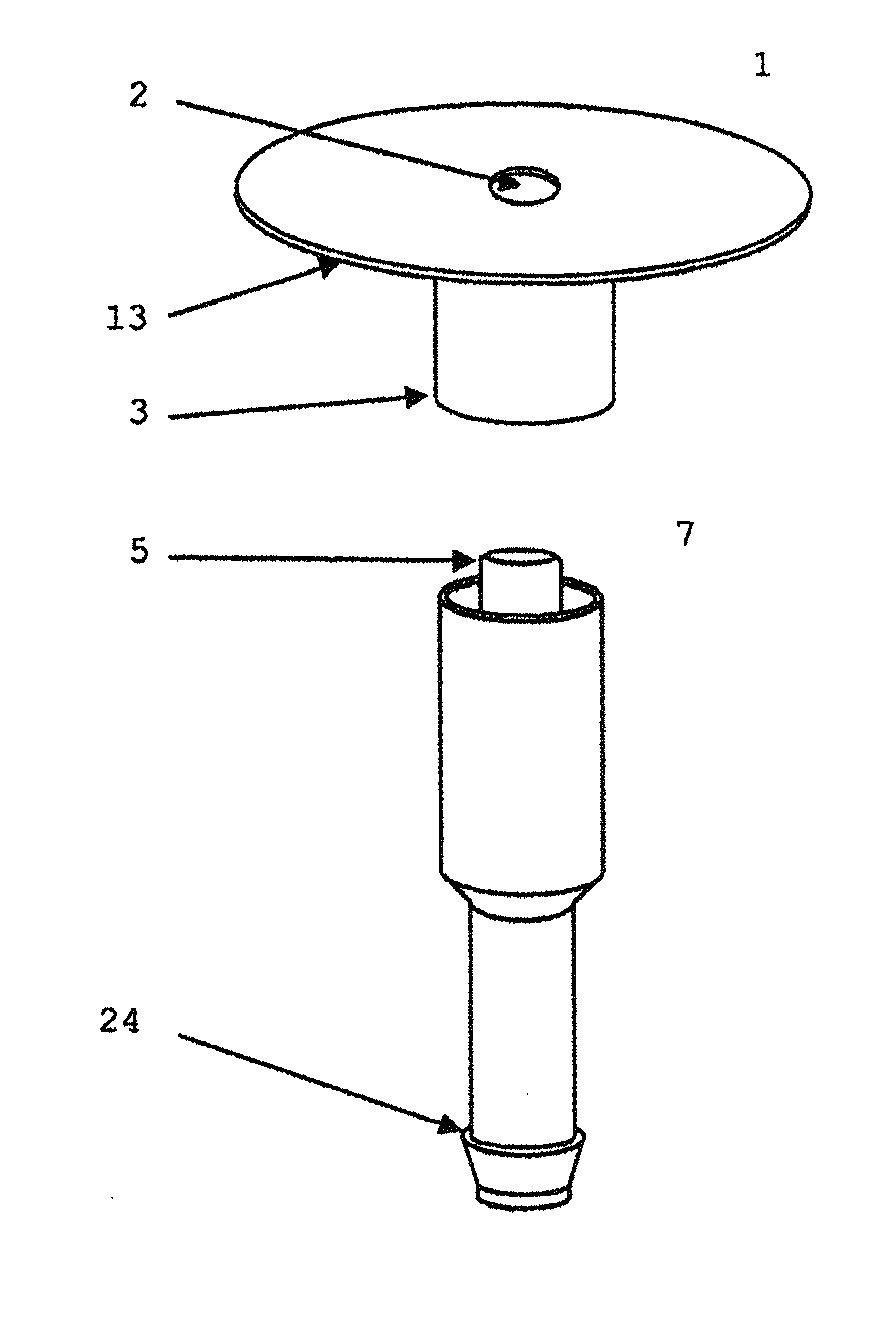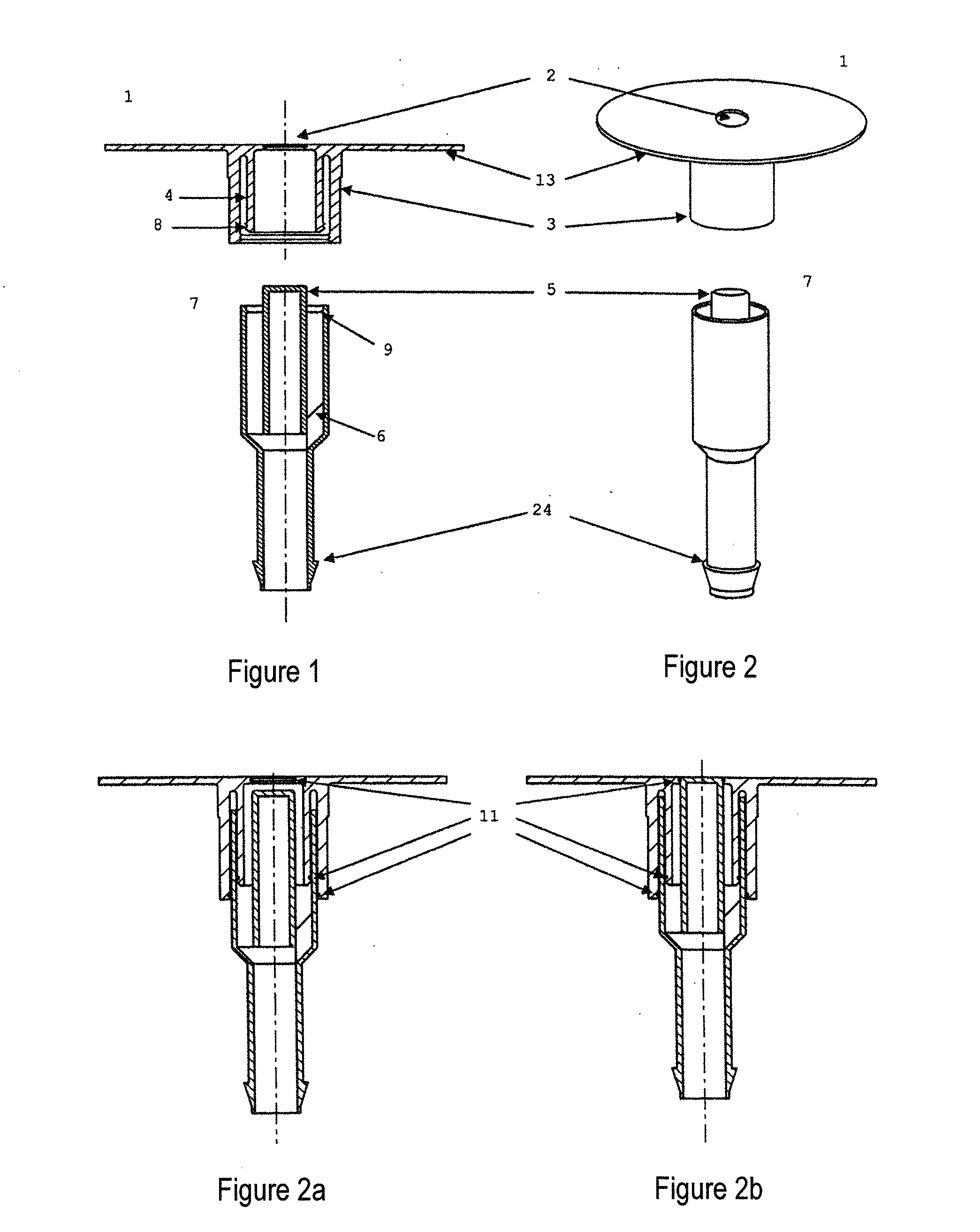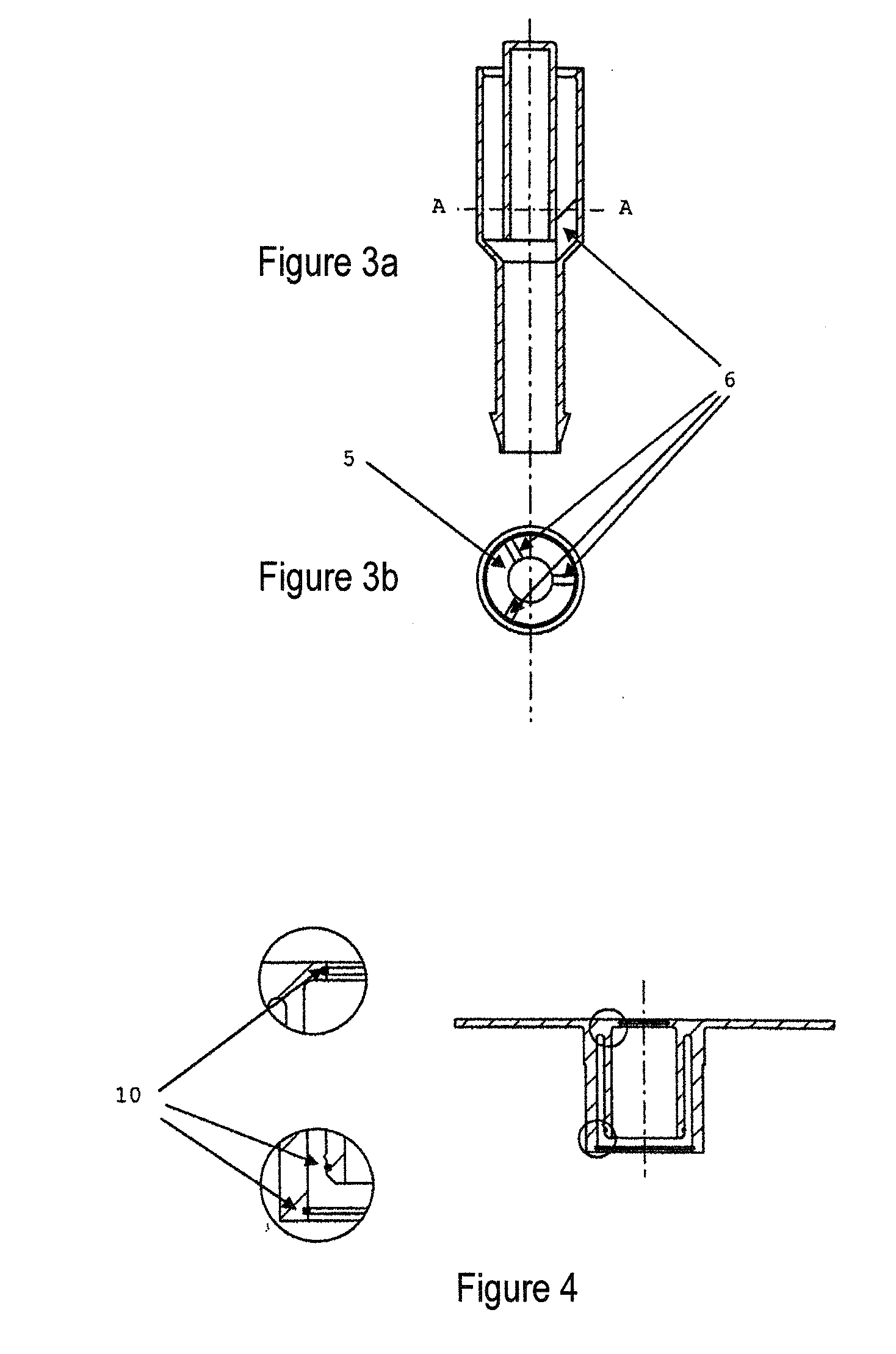[0013]The opening is closed by a plug. The PLUG is held coaxially in a lower part, which is in the form of a hollow body, by means of at least one retaining device. In order to open the opening, the upper section of the lower part can be displaced longitudinally in the intermediate space away from the container, and the longitudinal displaceability of the lower part is restricted by locking devices. It is therefore ensured that, for the opening and closing, objects are not moved into the region on the inside of the container. While the handling is desirably simple, the locking devices at the same time prevent the lower part from being pulled off, and therefore take on an important securing function. Hectic, rapid or overvigorous opening is therefore absorbed. Furthermore, the closure essentially comprises the two parts, the upper part and lower part, which can each be manufactured simply and cost effectively and joined together. A further important
advantage is the manner of guiding the media. A preliminary space, and therefore dead space, for the medium is dispensed with by the container having a rectilinear transition in the opening into a line via the closure. By means of the coaxial hollow bodies and the lower part, which is held and can be guided in a longitudinally displaceable manner therein and is in the form of a hollow body, the medium is guided into the container or out therefrom in a rectilinear, simple and protective manner. Furthermore, the construction means that the medium cannot pass to the outside, thus avoiding
contamination of the environment and damage to individuals.
[0014]According to a preferred embodiment of the invention, the locking devices are arranged on the inner wall of the lower part and on the outer wall of the inner hollow body. This can be realized simply and cost-effectively by injection molding. The
push and pull handling can therefore lead reliably and simply to opening and closing of the closure. At the same time, complete pulling off is effectively prevented. The design of the closure also permits flexible material to be able to used for the production thereof, since the geometrical arrangement in relation to one another of outer cylinder, inner cylinder and the lower part with a plug prevents bending, for example of the inner cylinder, by vigorous opening, and therefore prevents the locking devices from moving above one another.
[0018]In a further advantageous refinement of the invention, the inner wall of the outer hollow body and the outer wall of the inner hollow body each have at least one sealing element. The medium can therefore flow in and out in sterile form, and there is no dead space for a medium which emerges or has already emerged through the opening due to a defective closure or because of leakage or which may accumulate in the closure after being let out or admitted. As a result, there is also a further, additional securing means which prevents leakage from emerging into the environment.
Contamination of the environment is therefore avoided and a risk to individuals is ruled out. If a container is already full, the minimal flow resistance enables the medium to flow past the plug directly into the lower part and from there into a
discharge line. The medium behaves in the same manner when flowing into the container. However, in the case of high volumetric flows, it is possible for parts of the media flow to pass along the outer wall of the inner hollow body into the region between the inner and outer hollow bodies. An escape is therefore effectively prevented by means of sealing elements at the above-mentioned region.
[0019]According to a further particularly preferred embodiment of the closure according to the invention, the outer hollow body and / or in the inner hollow body and / or the lower part are of rotationally symmetrical design. The shape is preferably round. The production and the handling are therefore made easier. In particular in the case of a cylindrical design,
connectivity to tube lines or pipes is simplified.
[0021]According to a further preferred embodiment of the invention, the locking devices are encircling sealing lips or ribs. Locking devices of this type ensure an effective barrier against the lower part being pulled off from the upper part. For example, sealing lips can be used for guiding the upper part and lower part in one another in a simplified manner and for simultaneously locking the hollow body of the lower part within the inner and outer cylinders of the upper part. By means of a projection which is beveled on one side, sealing lips of this type permit simple plugging one inside the other and prevent a subsequent pulling out beyond said point.
[0027]According to a further preferred embodiment of the invention, the closure is additionally secured against an unintentional opening by means of a union nut, a bayonet closure, a torsional snap-in connection or a sleeve with a predetermined
breaking point. Said devices can furthermore fulfill an indicator function, for example in conjunction with RFID devices or
computer program products which register and store the unintentional opening of the closure and provide the information to a user in readable form. A further example is a sleeve with predetermined breaking points. The sleeve is connected on one side via collars to the upper part and on the other side to the lower part and keeps said parts one inside the other. By rotation of the collars counter to one another or of the lower part in relation to the upper part, the sleeve breaks at predetermined breaking points and the closure can be opened. A breakage at the sleeve can then be used as an indicator which indicates the use of the outlet and therefore leads to greater process security and control.
 Login to View More
Login to View More 


